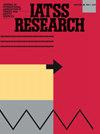Assessing the potential of half-height platform screen doors to prevent personal injury accidents: Evidence from the Tokyo metropolitan area railway network
IF 3.3
Q3 TRANSPORTATION
引用次数: 0
Abstract
While railway travel in Japan is considered one of the safest modes of transportation, passengers on station platforms still face notable risks, including hundreds of injuries and fatalities caused annually due to passenger falls, track intrusions, and collisions with trains. In response, railway operators have been working to enhance platform safety through the installation of platform screen doors (PSDs), supported with subsidies from the Japanese government and guided by numerical targets set by the government to promote their widespread adoption and reduce personal injury accidents. As prior research has primarily focused on their impact on suicide prevention, the effectiveness of PSDs in preventing various types of personal injury accidents has received limited attention. In this study, we compiled data on railway personal injury accidents in the Tokyo metropolitan area from 2002 to 2018, classified by accident attributes, as well as data on passenger numbers and PSD installation periods. Using a fixed-effect Poisson model, we estimated the extent to which the installation of half-height PSDs reduced personal injury accidents. The results show that the installation of PSDs led to a statistically significant reduction (93.1 %) in platform accidents, and almost completely prevented fatal incidents. Although the relationship between passenger volumes and accident frequency was expected to be positive, the parameter for passenger numbers was not statistically significant in most models, possibly due to the limitations of the dataset collected before COVID-19. These findings underscore the potential of PSD installations not only in improving platform safety but also in prompting further analysis of their cost-effectiveness to guide future implementation strategies.
评估半高站台纱门预防人身伤害事故的潜力:来自东京都市圈铁路网的证据
虽然日本的铁路旅行被认为是最安全的交通方式之一,但站在站台上的乘客仍然面临着显著的风险,包括每年因乘客摔倒、轨道侵入和与火车相撞而造成的数百人受伤和死亡。作为回应,铁路运营商一直在努力通过安装站台屏蔽门(psd)来提高站台安全性,在日本政府的补贴支持下,并在政府设定的数字目标的指导下,促进其广泛采用,减少人身伤害事故。由于先前的研究主要集中在其对自杀预防的影响上,因此对psd在预防各类人身伤害事故中的有效性的关注有限。在这项研究中,我们收集了2002年至2018年东京大都市地区的铁路人身伤害事故数据,按事故属性分类,以及乘客人数和PSD安装周期的数据。使用固定效应泊松模型,我们估计了安装半高psd减少人身伤害事故的程度。结果表明,安装psd后,平台事故发生率显著降低(93.1%),几乎完全避免了致命事故的发生。尽管预计客运量与事故频率之间的关系为正,但可能由于COVID-19之前收集的数据集的局限性,大多数模型中的乘客人数参数在统计上不显著。这些发现强调了PSD安装的潜力,不仅可以提高平台的安全性,还可以促进对其成本效益的进一步分析,以指导未来的实施策略。
本文章由计算机程序翻译,如有差异,请以英文原文为准。
求助全文
约1分钟内获得全文
求助全文
来源期刊

IATSS Research
TRANSPORTATION-
CiteScore
6.40
自引率
6.20%
发文量
44
审稿时长
42 weeks
期刊介绍:
First published in 1977 as an international journal sponsored by the International Association of Traffic and Safety Sciences, IATSS Research has contributed to the dissemination of interdisciplinary wisdom on ideal mobility, particularly in Asia. IATSS Research is an international refereed journal providing a platform for the exchange of scientific findings on transportation and safety across a wide range of academic fields, with particular emphasis on the links between scientific findings and practice in society and cultural contexts. IATSS Research welcomes submission of original research articles and reviews that satisfy the following conditions: 1.Relevant to transportation and safety, and the multiple impacts of transportation systems on security, human health, and the environment. 2.Contains important policy and practical implications based on scientific evidence in the applicable academic field. In addition to welcoming general submissions, IATSS Research occasionally plans and publishes special feature sections and special issues composed of invited articles addressing specific topics.
 求助内容:
求助内容: 应助结果提醒方式:
应助结果提醒方式:


